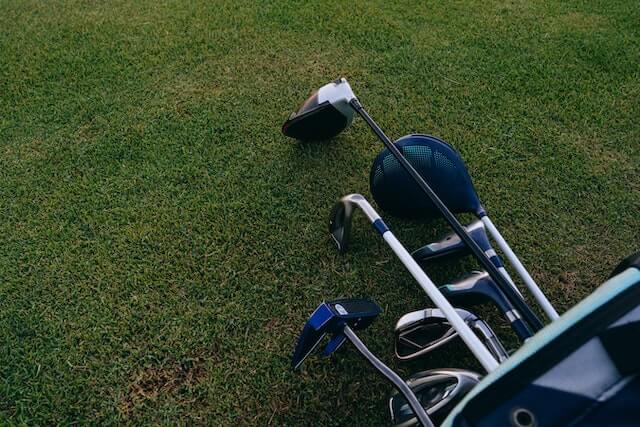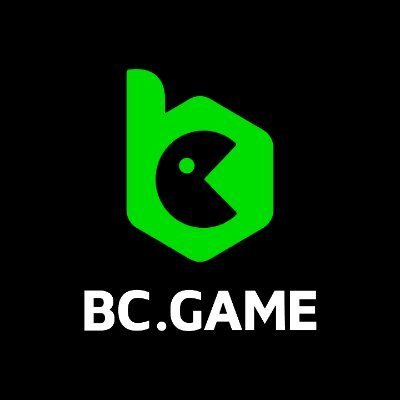Golf Terms: Master the Language of the Game
Sports, like other hobbies and special interests, have their own terminology and slang. Due to its popularity and longevity, golf has a rich lexicon and many expressions can be difficult to understand for someone new to the game. Sometimes even seasoned players come across a term that they are unfamiliar with.
Learning golf jargon, from common “birdie” and “par” to the more obscure “dogleg,” will not necessarily make you a better golfer, but it will certainly help you sound the part. It may even deepen your understanding of the game. So be sure to stay with us as we go over these basic golf terms!
Golf Equipment

Golf has been around for a long time, with the game’s origins most likely dating back to the 15th century. Many golf organizations and associations, such as the United States Golf Association and the Ladies Professional Golf Association, have survived and thrived throughout the decades. And, logically, a lot of golf vocabulary has developed as a result.
The jargon used in golf can be intimidating to someone who is just starting out. That is why we created this golf glossary for beginners, so continue reading to learn about golfing equipment, golf courses, playing the game, and more.
Golf Ball
Let’s start with the basics! Golf balls are one of the key golf terms to know. The USGA and other golfing authorities regulate the size and weight of the ball used in the game. Specifically, a golf ball can’t be more than 1.62 ounces in weight and 1.68 inches in diameter.
When the ball is dropped into a hole on the green, the hole is considered finished. As for the number of dimples on a golf ball, there are usually no restrictions, but they must all be symmetrical.
Golf Glove
This is one of the most common golf terms that everyone is familiar with. The vast majority of golfers wear golf gloves on their “weaker” hand. For example, a right-handed golfer should wear their glove on their left hand.
When it’s particularly cold or wet outside, most players wear gloves on both hands. It is customary to remove one’s gloves when putting or making other delicate shots on or near the green.
Golf Clubs
To improve your golf game, you should be familiar with the types of golf clubs and when they should be used. Without further ado, let’s begin!
Loft
Before we get into golf clubs, let’s define loft. The loft is the angle between the ground and the clubface, and it varies according to the type of golf club used. It affects how the golf ball travels, so understanding this term is essential.
Irons
Next on our list of golf terms are irons. They have much thinner and flatter club heads than drivers (which we’ll go over in more detail below). This type of golf club is your best bet off the tee when you don’t need the distance of a wood and before you get to the green. Are you wondering what “tee” means? No worries, we’ll define it below as well.
The higher the number of the iron, the more loft it has, and the further you can hit the ball. An 8-iron has a higher loft than a 7-iron. As a result, the distance of an 8-iron shot shouldn’t be as great as that of a 7-iron.

Drivers
Because of its large club head and long shaft, the driver has the lowest loft of any club except putters. In light of this, the club you should be able to hit the furthest with is the driver. Drivers are almost never used for ground shots; they are only used for tee shots.
Golf Terms: Wedge
Out of all golf clubs, wedges have the most loft. Golfers typically use them for full-swing approach shots from shorter distances, as well as for playing from difficult lies such as bunkers or rough.
Woods
The club heads on golf woods are larger and more oblong than those on irons. Woods have longer shafts than irons, and they have less loft than most irons, so you should be able to hit shots further with them.
Hybrids
As the name implies, a hybrid club combines wood and iron technologies. Although the club head design is similar to that of a short wood, hybrids have lofts more akin to irons.
Golfers of all skill levels use hybrids and are familiar with these golf equipment terms. Those are especially useful for beginners and players who struggle with distance or launching the ball high when using lower loft irons.
Golf Course Terms
Each golf course is made up of a series of holes, but what are the names of the other elements we come across on the field?
Tees/Tee Box
A tee, or tee box, is the area of the course where players stand before beginning their round. The term “tee” can also be used to describe the wooden or plastic peg that is driven into the ground before a shot is made.
Fairway
The middle section of a golf hole where the grass is kept short between the tee and the putting green is called the fairway.
Golf Format Terms
The rules of the golf game are determined by the format. Because there are numerous golf tournament formats, we will go over the basic golf formats: stroke play and match play.
Match Play
Teams compete against one another on each hole. In this competition, the number of holes won is more important than the total number of strokes taken.
Stroke Play
This format, also known as medal play, is determined by the cumulative score of each player over the course of a single round or a predetermined number of rounds.
Golf Shot Terms
As more people than before are enjoying golf, it’s natural that new expressions emerge on the golf course every day. But you have to start somewhere, so let’s look at these golf shot names. A golf shot can take many forms, and the following terms can be used to describe the various ways the ball can be struck or the shapes that these shots can take.
Stroke
In golf, any forward swing made by a player with the intention of hitting the ball is considered a stroke.
Par
Par, in golf terms, represents the number of strokes a player needs to make in order to complete the round. Par is determined according to expert golfer standards, and for each hole it includes two putts. However, when it comes to par rating, the main factor is distance.
Keep in mind that the par value changes based on whether you need to hit the ball uphill, downhill, or with elevation.
Pitch
In golf, a pitch shot is a shot hit with a club that has a high loft and is meant to travel a short distance by launching the ball upward and then back downward at a high angle.
As opposed to a chip shot, a pitch shot is intended to cover the majority of its distance while in the air, according to golf terms and definitions. Due to its high spin, a pitch shot should roll less than a chip shot.
Chip
A chip shot is a short shot played near the green with the intention of getting the ball rolling quickly. However, chip shots are meant to roll along the ground rather than fly through the air like a pitch shot.
Putt
A putt is a putter shot taken from the green with the intent of rolling the ball onto the ground at or near the hole. Putts should be taken only on or near the green.
Flop
A flop shot, also called a lob shot in golf lingo, is played by hitting the ball so it flies extremely high in the air to fall sharply and stop quickly on the green. Widen your stance and angle the clubface significantly when attempting a flop shot.
Shank
In golf, a shank occurs when the hosel of the club, as opposed to the clubface, makes contact with the ball. The ball’s trajectory looks a lot like a slice, but there is a crucial difference between the two poor shots.
Golf Scoring Terms
The common golfing terms “birdie,” “albatross,” and “eagle,” might make you think you need a birdwatcher’s guide to understand the game, but let’s get past that and find out what they actually mean.
Lie
The ball’s current location on the ground is a “lie.” The ball could be on a “good lie” in the thin grass of the fairway, or it could be on a “bad lie” in the thick grass of the rough. If you have a sidehill lie, the ball could be above or below your feet.
Golf Terms: Birdie
A birdie results in a score that is one stroke lower than the par score for that hole. The Atlantic City Country Club is widely regarded as the birthplace of the term. Interestingly, in 1903, when this word became part of golf discourse, “bird” meant “cool” and “excellent”.
Eagle
A golfer has scored an eagle when he or she goes two strokes under par on a particular hole. Consider a par-5 hole, which normally necessitates three strokes. A “hole in one” is an example of an eagle, but it is more commonly known as a “hole in one” or Ace.
Bogey
A bogey is a hole in which you shot one more than par. Another possible outcome is going two (double bogey), or even three strokes over par, with a bogey five being fairly common.
Golf Terms: Albatross
If you play golf and manage to get three shots under par on a single hole, you’ve accomplished an Albatross or Double Eagle. Although a hole-in-one on a par-4 counts as an albatross, this extraordinary feat is most commonly accomplished by making only two strokes to complete a par-5.

Funny Golf Terms
Golfers have a reputation for being pretentious and unwelcoming, but there is another side to the game that deserves more attention, so let’s take a look at some of the wackier terms used in the sport.
Fried Egg
Bunker sand can be plugged to create a shape resembling a fried egg, which is called a fried egg lie. When the ball hits the sand and immediately stops rather than rolling or bouncing, the player can expect a “flat” lie.
Dogleg
A dogleg is a straight fairway with a sharp bend to the left or right, so named because it resembles a dog’s hind leg.
Fore
In golf terms and slang, if a golfer hits a stray shot that could harm another player, he or she will yell “Fore!” So when your fellow golfers yell, you should understand that they mean to take cover or just duck.
The 19th Hole
Even though your scorecard is designed for 18, the 19th hole is where the real action happens. What you’re looking at is the bar. It doesn’t matter how well or poorly you played, the 19th hole always brings you back to reality, as a place to meet new people and share stories from your rounds.
Mulligan
The opportunity to retake your previous swing is known as a mulligan and is often offered in a friendly competition between golfers as a way to help novices feel more comfortable. Mulligans are not allowed in any official competition.
Golfing Terms: Bottom Line
As your golfing experience grows, you’ll become comfortable using these terms regularly. Anyone who has spent any time on golf courses has most likely heard at least a few of these phrases.
Of course, golf vocabulary doesn’t end here, but it should be sufficient to get you started. If you learn this golf jargon, you’ll have a lot more fun on the course, and even off the course if you enjoy golf betting!
 BC.Game
BC.Game  7Bit
7Bit  Ducky Luck
Ducky Luck  Red Dog
Red Dog